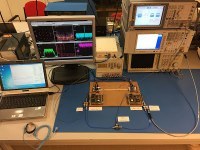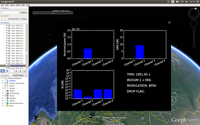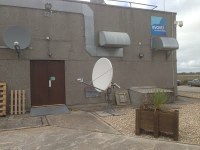INESC TEC concluded European project that made communications in space more effective
CONSORTIUM HAD €1M TO IMPROVE COMMUNICATIONS BETWEEN SATELLITES AND FROM SATELLITES TO EARTH
SCREEN - Space Cognitive Radio for Electromagnetic Environment management – is the name of the European project whose goal was to improve communications in space. The project was concluded this April. The consortium featured four organisations: two from Portugal – INESC TEC and TEKEVER ASDS (Aerospace, Defense and Security) -, one from the UK – Avanti Communications LTD – and one from Germany – Munich Innovation Labs UG.


How did the researchers make communications in space more effective?
Using existing technologies applied in terrestrial communications combined with the concept of cognitive radio communications. Project SCREEN has made it possible to improve communications between satellites and from satellites to Earth, by reducing existing interference.
But what are cognitive radio communications?
At INESC TEC, the project was developed by the Centre for Telecommunications and Multimedia (CTM) and featured two CTM researchers, Henrique Salgado and Luís Pessoa.
The technologies were tested at INESC TEC’s laboratories
According to Luís Pessoa, the great innovation evident in this project was the implementation and testing phase of the technologies. Because launch costs are high, there are still few technologies that are tested in Space, so the tests were conducted at INESC TEC’s laboratories, considering typical interference signals of satellite communications.
“We used two GAMALINK transceivers, which is a Tekever platform, and added some interference to the previously established communication to assess the system’s ability of the system to adapt automatically”, explains Luís Pessoa.
The transfer of technology
The technology is expected to be transferred to the market with the incorporation of the cognitive radio module, which will become an additional feature to be incorporated into the GAMALINK product range, already marketed by Tekever.
INESC TEC also developed a satellite network simulator, which is available to the public through a GPL license at: https://github.com/Munich-Innovation-Labs/screen-visualization.
Project SCREEN was funded by the European Commission's H2020 Space Program, under agreement No. 640210. The project’s topic is "COMPET-6-2014: Bottom-up technologies of low technology readiness". The project started on 1 January 2015 and involved four partners.
The researcher mentioned in this news piece is associated with UP-FEUP and INESC TEC.




